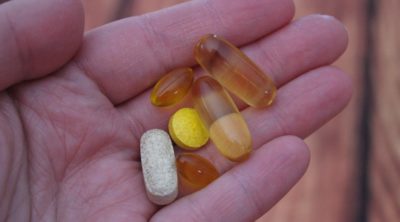
When you get a frostbite, immediate treatment is very essential, as the human flesh is extremely vulnerable to cold. When the temperature drops below 54ºF, circulation in the hands reduces; and when it drops below 46ºF, touch sensitivity is lost. At -4ºF to -13ºF, a frostbite can occur in minutes.
Those who are most commonly affected and most susceptible to frostbites and need treatment at once are:
- People who spend a long time outdoors, such as hikers and the homeless.
- Those who don’t have enough food, heating, and shelter.
- Those who are terribly exhausted or dehydrated, and have poor blood circulation.
- Those from tropical climates.
- Those under the influence of alcohol.
- Those who use nicotine or other vascoconstrictive drugs.
- Those having peripheral neurotherapy (nerve damage).
- Those with underlying illnesses such as diabetes, malnutrition, infection, periphereal vascular disease, atherosclerosis, arthritis, diabetes, thyroid disease, and stroke.
Frostbite, more a disease of morbidity than mortality, occurs when the skin and tissues freeze and deteriorate. They also occur when one is exposed to extreme environmental cold and high winds, below freezing point of the skin (hypothermia). The nose, lips, ears, cheeks, fingers, and toes are the most vulnerable parts and most commonly affected.
Basics
When our body is faced with extreme and dreadfully-freezing conditions, the priority for it becomes survival, and then functioning. As long as the body is exposed to extreme cold, the blood vessels in our extremities or arms and legs begin to constrict, slowing the blood flow to the skin. This is done by the body as a way to protect its vital organs and prevent decrease in the internal body temperature, by way of sending more blood to them, supplying them with the nutrients they need to cope. If this goes on, the parts that are farthest from the heart go on getting colder.
A condition called ‘hunter’s response’, is where the capillaries of the extremities open or become dilated for a period of time, and then they constrict again. And, it is an ongoing cycle of dilation and constriction in order to keep the extremities functioning as much as possible. If the brain senses danger of hypothermia, when the body temperature drops significantly at dangerously low levels, it sends a signal to permanently constrict the blood vessels in order to ensure that the internal organs don’t receive any cold blood. This is the time one starts experiencing this condition.
Its symptoms can occur in two different ways-
1. The first type is a first-degree cold injury (called frostnip). It is a superficial one, when you begin experiencing is burning, numbness, itching, pins-and-needles tingling in the skin. This can recover most entirely after the skin and tissue are thawed. The cells begin getting dehydrated and destroyed due to the same, as there ice crystals that are formed outside the cells, and water is lost from within the cell.
2. The second way is when the lining of the blood vessel lining is damaged, and they begin having holes, making blood leak out from tissues and clot in the smallest vessels. Blood flow is hindered, leading to inflammation, causing the tissue to get even more damaged. The second type is a deep frostbite. There are two degrees depending upon the severity. When the skin is frozen, it appears white or blue, but there is not much of tissue damage. This is a second-degree condition.
In a third-degree cold injury, the condition aggravates, sensation in the area reduces and is then lost completely. It gets swollen, and there are blisters filled with blood. The skin looks almost yellowish or white, and then turns into a waxy purple-blue, and the area hardens. The damage is likely to be permanent.
When the affected parts are rewarmed after treatment, there is quite a lot of pain, as the blood begins to flow again. The dull ache becomes a throbbing one in two to three days. It isn’t known until some time later how much tissue damage has actually been caused, as in the beginning, areas look fairly healthy even if there is tissue damage. A severe injury, when frozen to the bone, damaging the muscles, tendons, and nerves, can lead to gangrene and loss of limbs. The treatment is best given by doctors. But, if you’re too deep in the cold wilderness or high up a mountain, and cannot get medical attention easily, there are some steps you can take for treatment.
Treatment
First degree treatment –
- If you can, move to a warmer place – that would be the obvious first thing to do.
- If you’re wearing any tight or wet clothes, replace them with loosely layered, warm and dry ones so that your body doesn’t go on losing heat.
- Remove any jewelry or constricting accessories, as they impede blood flow.
- Wrap blankets to keep your body warm, and especially, the areas that are frostbitten.
- Don’t rub the affected area or expose it to direct heat (such as, fire or heater). If you rub the affected area, it can be very harsh, as you move the ice crystals around and cause further damage. As one of the symptoms is loss of sensation, never put direct heat, because you never know how hot it is and can burn your skin and make it worse.
- Drink warm fluids that don’t contain any alcohol or caffeine.
- You can also use your breath to warm the area. You can also tuck your hands or feet inside warm clothing or under bare warm flesh (armpits and groins usually), and warm the tissue gently.
- Don’t begin to rewarm until you’re out of the cold. Once you’re in a warmer place, begin rewarming by immersing the affected area in warm (and NOT hot) water. The temperature should be that of a newborn baby’s bath, which is about 104 to 108ºF. This should take about 20-40 minutes before the color and sensation begin to return. But, if the condition is very severe, it is best to rewarm under medical supervision, as the pain can be intense when the sensation in the affected area returns. A painkiller would certainly help ease out the pain.
- Don’t partially thaw and freeze the area again, as it would just stab the cells even more.
- Wrap the frostbitten area with clean bandages with your toes and fingers separated out, after thawing or rewarming in order to avoid any infection.
- Avoid too much movement, and it is best to keep feet up if they are frostbitten, or elevate the parts that are affected to reduce swelling.
- After the skin is rewarmed, it appears discolored, can blister, and then scab over. But, if it is a superficial wound, new, pink skin is formed. The affected area recovers after six months usually. If the injury is very severe, the tissue dies and is affected by gangrene. You may lose it or may have to get it amputated.
The amount of tissue damage is not proportional to the temperature to which it was exposed, but to the time it stayed frozen. Hence, if you need more than just the first degree treatment, it is important to rush to the nearest hospital by any means.
Treatment at the Hospital
- After taking care of the initial threats, rewarming is very important. This is done by heating a bath to 104-108ºF and thawing the affected area for 20 to 30 minutes.
- Painkillers are given, as this process is quite painful.
- As there may be dehydration, IV fluids are given.
- After rewarming, there is post-thaw care to prevent any infection and lack of oxygen in the area.
- Clear blisters are debrided, whilst the ones that have blood in them are kept intact.
- If amputation is necessary, tissue Plasminogen Activator (tPA) is given into an artery to reduce clotting of blood.
- A tetanus injection may be given too.
- Hospitalization for a day or two is essential for determining how much damage there is, and to decide if a severe treatment which is required.
Herbal Treatment
- Aloe vera juice or gel acts as an antiseptic, antibacterial, and anti-inflammatory medicine and moisturizes and regenerates the tissue.
- Marshmallow helps healing freezes.
- Witch hazel helps with recovery of the frozen area, preventing infections.
- Cucumbers restore the skin.
- Radishes helps extensively in the healing process.
- Ginger when ingested, has great anti-inflammatory and analgesic, increases circulation and greatly aids in treatment.
There are several ways to avoid frostbites so that you don’t have to think about a treatment at all. It is good to wear woolen clothes. Wool is the best natural insulator. Synthetic fabrics can also be okay to use if you aren’t using wool. They don’t tend to absorb a lot of water and help in keeping the skin dry. Avoid cotton clothes, because they get wet and remain moist for a longer duration. Waterproof boots with liner socks work best to keep your feet warm. Keep your head and ears warmly covered with a hat. Ears are vulnerable to frostbites, and our head doesn’t have much insulation of its own. If you’re skiing, make sure to mask your face to avoid cold biting winds.
If you’re suffering from this condition, eat foods that are rich in vitamin C and niacin, as they help healing. Take lots of warm fluids. Avoid drinking alcohol and smoking, as they hinder circulation. Eat a well-balanced diet, full in minerals and vitamins so that your body can build new healthy tissues.
Disclaimer: This Buzzle article is for informative purposes only, and should not be used as a replacement for expert medical advice.


